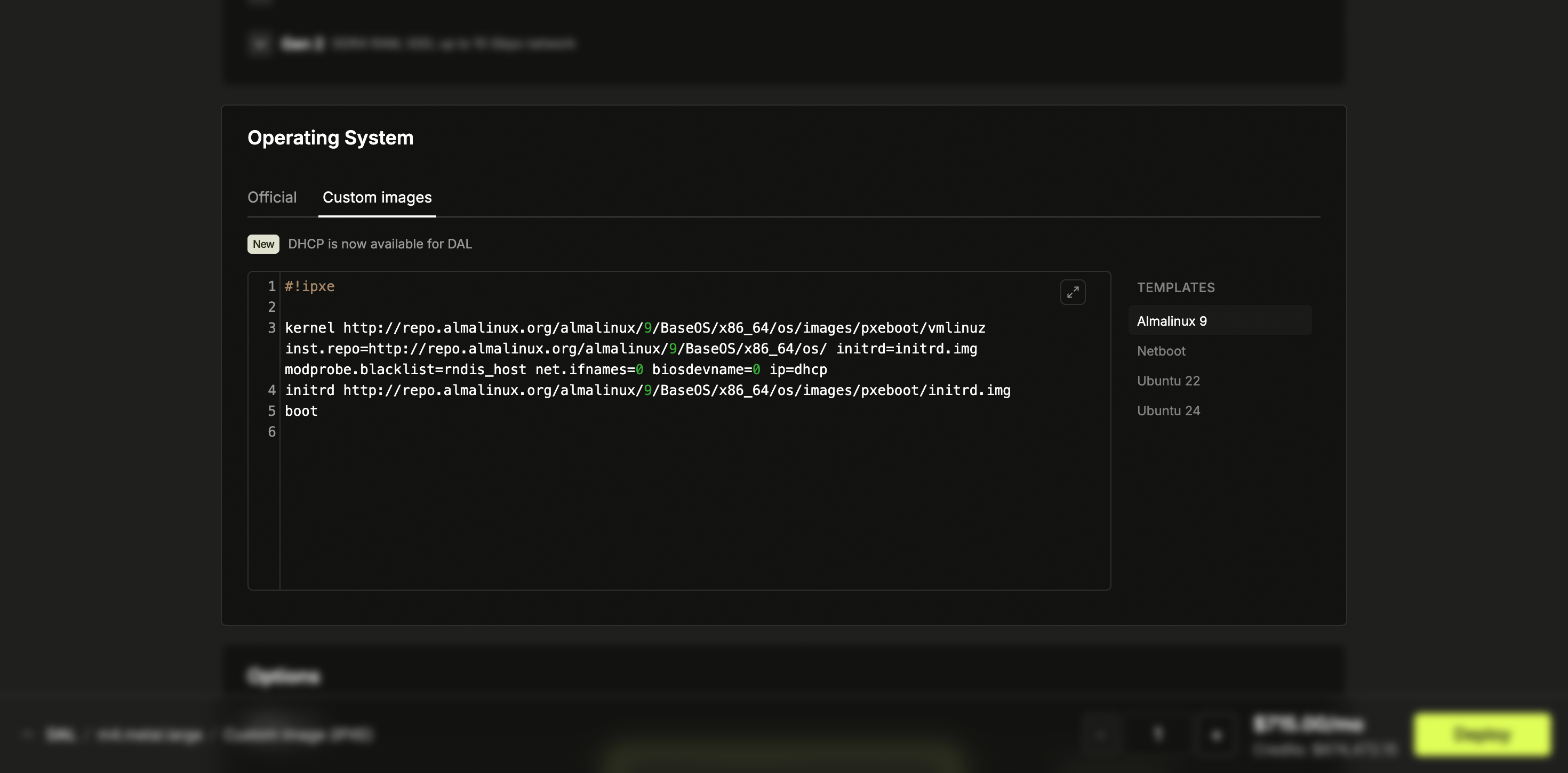What is an iPXE script
The iPXE script contains a set of instructions that specify how the network boot process should be performed. This can include loading an operating system image from a remote server, setting up network configurations, and executing custom scripts or commands. Learn more about iPXEDHCP
Our custom images deployment uses DHCP to automatically assign an IP address during the boot process. This simplifies the workflow so you don’t need to manually configure network settings with variables in most regions.How to deploy a custom image
- For the Operating System option on the server create page, paste your iPXE script under Custom images or select one of the examples from the right.

- Finish filling out the rest of the server create form as usual, including selecting the server type, location, and any other options you need.
- When ready, click the Deploy button at the bottom of the page. Latitude.sh will begin deploying your server using your iPXE script, and you should see status updates on the server’s progress in your account dashboard.
Exceptions
Variables are only required for custom images deployed in the following regions: TYO3, TYO4, SAO, SYD2, and SAN3. For all other regions, DHCP will handle network configuration automatically. If you’re deploying in one of these regions, you can use these variables when writing your script. See some examples here.| Variable | Description |
|---|---|
{{ PUBLIC_IP }} | Public IP of the server that will be provisioned. |
{{ PUBLIC_GW }} | Public Gateway used to configure the network. |
{{ INTERFACE_ID }} | The public interface ID is used to configure the public interface of your server. |
{{ NETMASK }} | The Subnet Mask |